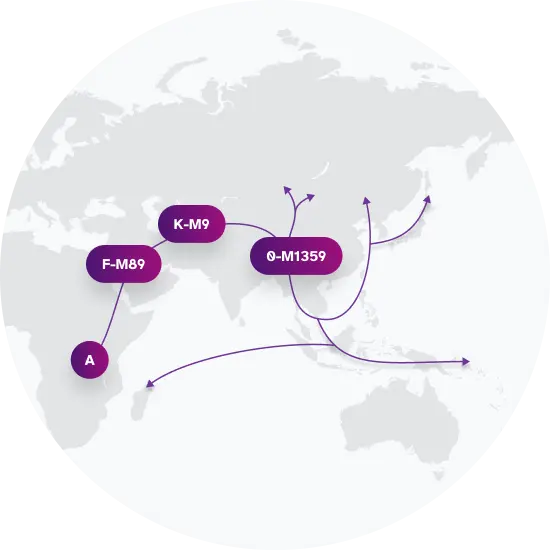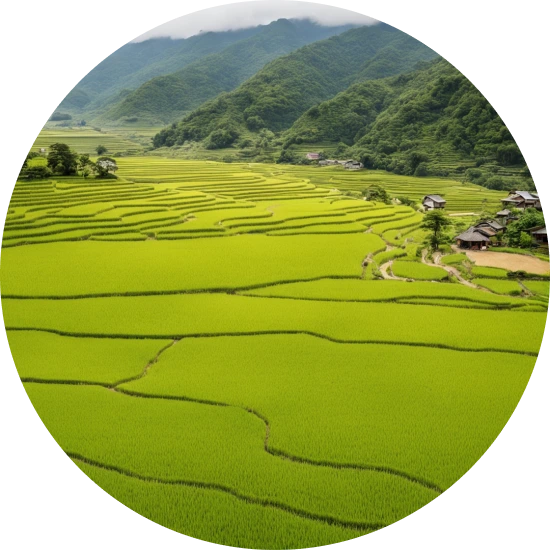Haplogroup O-M1470
What is Paternal Haplogroup O-M1470?
Haplogroup O-M1470, also known as Haplogroup O-M1359 (Y Chromosome Consortium long-form label), is a genealogical group of lineages defined by unique genetic markers present on the Y-chromosome. Your paternal haplogroup, or that of your father if you do not have a Y-chromosome, paints a picture of your ancient origins and the migrations of your ancestors. Although your paternal haplogroup reflects just one of your many ancestral lineages, it carries information about that lineage over tens of thousands of years.
Haplogroup O-M1470 is descended from haplogroup O-M1359. Among 23andMe research participants, haplogroup O-M1470 is commonly found among populations in China and Vietnam.
It's important to note that your haplogroup doesn't define your current ethnic identity; rather, it provides an insight into your deep ancestry on the paternal side.
 Paternal Haplogroup Origins O-M1359
Paternal Haplogroup Origins O-M1359Top Surnames with Haplogroup O-M1470
For surnames with sufficient representation in the data, these percentages represent the frequency with which each surname is found in individuals exhibiting this genetic marker.
Haplogroup O-M1470 is linked to the Yayoi people
Historical Japanese cultures developed from two waves of people migrating from the Asian continent. Hunter-gatherers arrived in Japan more than 12,000 years ago, perhaps during the last Ice Age, when a land bridge connected Japan to the Asian mainland. This influx of people led to a culture called the Jomon. The Jomon were followed by a second migration into Japan nearly 2,300 years ago. This migration, called the Yayoi expansion, brought one lineage of haplogroup O1b to Japan, along with wet rice agriculture, weaving techniques, and metalworking technology. Research suggests that the Yayoi people were descendants of prehistoric farmers that originated in Southeast Asia, and may be associated with the origin of agriculture in the region. The transition of people in Japan from hunter-gatherers to farmers may have been triggered around 400 BC by technological developments introduced by the Yayoi people, including cold-resistant varieties of rice, iron tools, and rice field irrigation.

